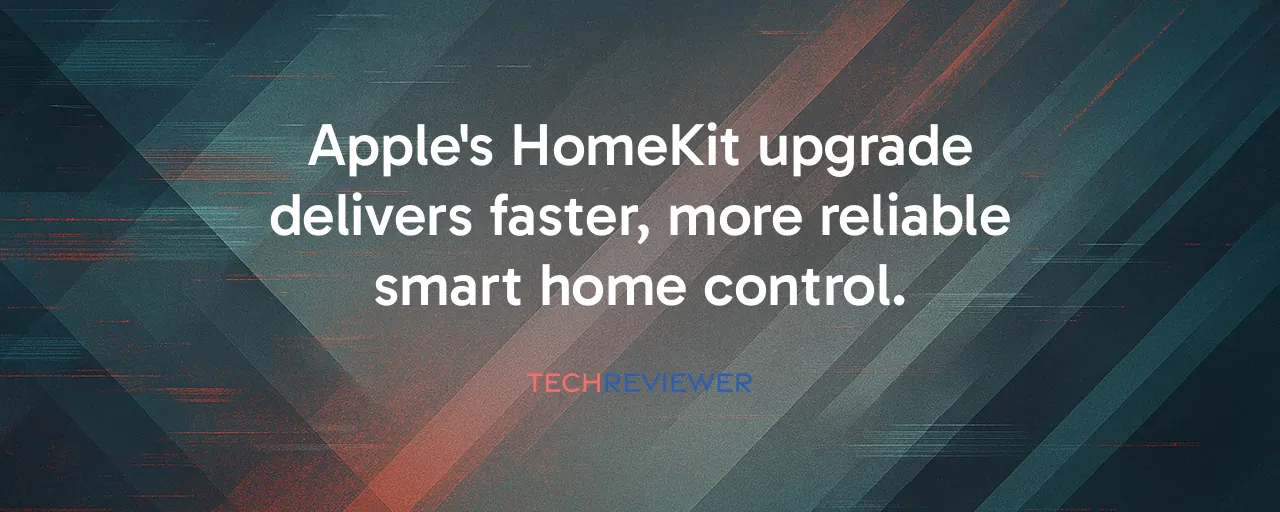A New Era for Apple's Smart Home Vision
Apple's HomeKit, the backbone of its smart home ecosystem, is getting a major overhaul. By February 10, 2026, the original HomeKit architecture, which has powered smart homes since 2014, will be phased out. In its place, a revamped system first introduced in January 2023 with iOS 16.2 and later stabilized in March 2023 with iOS 16.4 promises faster performance, better reliability, and compatibility with the industry-standard Matter protocol. This shift marks a pivotal moment for Apple's smart home ambitions, aligning it with broader trends toward seamless, interoperable home automation.
For years, HomeKit users have dealt with quirks like devices showing 'accessory not responding' or sluggish scene execution in larger setups. The new architecture tackles these pain points head-on, moving from a model where the Home app queried each device individually to a streamlined, hub-based system. A designated HomeKit Hub, like an Apple TV or HomePod, now keeps a real-time pulse on all devices, slashing lag and delivering instant updates. This represents a fundamental rethink of how smart homes function.
Why the Upgrade Matters for Your Home
The new HomeKit architecture brings tangible benefits. For starters, it's faster. Testing by users in late 2023 showed scenes executing in complex setups with 50 or more devices, like lights, locks, and sensors, now take seconds instead of half a minute. A homeowner with Thread border routers in a multi-story house saw a 40% drop in device response times, thanks to the low-latency Thread protocol now supported. Beyond speed, the system supports new features like guest access for temporary users, robot vacuum integration, and detailed Activity History for security tracking.
The shift also embraces Matter, a protocol backed by Apple, Google, Amazon, and Samsung, which lets devices from different brands work together seamlessly. This means your Philips Hue lights can coexist with an Ecobee thermostat or an August smart lock without the usual ecosystem headaches. For users, this opens up a world of flexibility, making it easier to mix and match devices while keeping everything under one app.
Real-World Wins and Challenges
The upgrade's impact is clear in real-world scenarios. Take a rental property manager overseeing multiple units with HomeKit setups. The new guest access feature has simplified granting temporary control to tenants or maintenance crews, cutting administrative time significantly. Meanwhile, a homeowner with a sprawling setup of lights, cameras, and climate controls reported fewer dropped connections and smoother automations after switching to the new system in early 2024.
But the transition hasn't been flawless. When Apple first released the new architecture in January 2023 with iOS 16.2, it was quickly withdrawn due to widespread issues including devices getting stuck in 'updating' mode or vanishing from the Home app entirely. Though Apple ironed out these issues by March 2023, the rocky start left some users wary. Plus, the need for a dedicated hub adds complexity, and if the hub goes offline, critical functions can stall. Users with older devices, like those running iOS 16.1 or earlier, face a tougher choice: upgrade hardware or lose HomeKit access entirely by 2026.
The Bigger Picture for Smart Homes
Apple's move reflects a broader shift in the $216.3 billion smart home market, projected to hit $489.2 billion by 2035. The industry is pivoting toward interoperable standards like Matter and Thread, which promise reliable, low-latency control without tying users to one brand. Apple's hub-based model aligns with competitors like Google Home and Amazon Alexa, which also lean on centralized intelligence for smoother performance. This convergence signals a future where smart homes are less about proprietary walled gardens and more about flexibility and user choice.
Still, manufacturers like Eve or Lutron face pressure to ensure their devices work with the new system while supporting legacy users through the transition. Smaller companies, without the resources of larger players, may struggle to keep up, potentially reshaping the competitive landscape. For users, the mandatory upgrade deadline raises concerns about forced obsolescence, especially for those with older, unsupported devices. Privacy also looms large, as the hub's reliance on iCloud syncing and Activity History storage sparks questions about data retention in regions with strict regulations.
Navigating the Transition
With the February 2026 deadline looming, HomeKit users need to act. Devices must run at least iOS 16.2, iPadOS 16.2, macOS 13.1, tvOS 16.2, or watchOS 9.2 to stay compatible. For complex setups, careful planning is key to avoid breaking automations during the switch. Communities like Home Assistant and industry forums are stepping up with migration guides, while manufacturers are rolling out firmware updates to ease the process.
Apple's bold step positions HomeKit as a serious contender in the smart home race, blending speed, security, and interoperability. While the transition demands effort from users and manufacturers alike, the payoff is a smarter, more connected home that plays nicely with the industry's future. Whether you're a casual user with a few smart lights or a power user with a house full of gadgets, the new HomeKit is poised to make your home work better, provided you're ready to make the leap.
